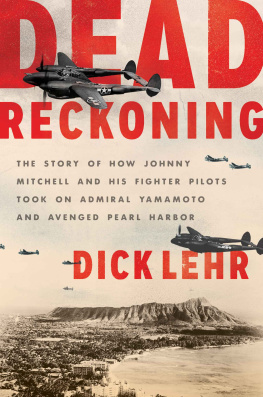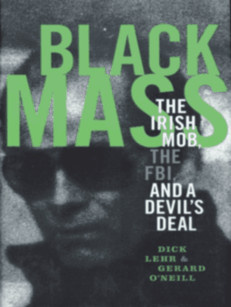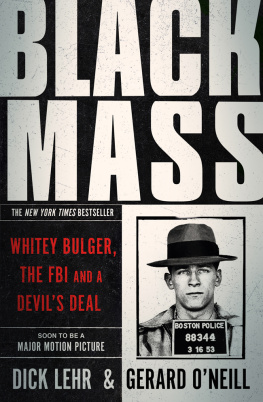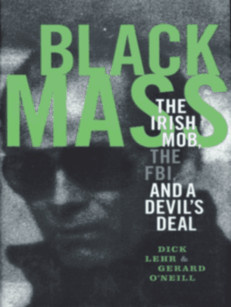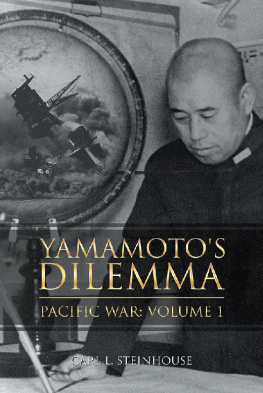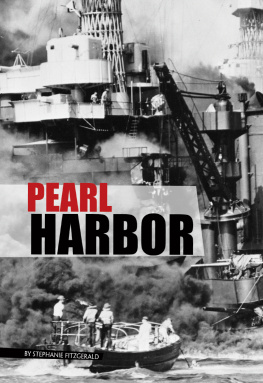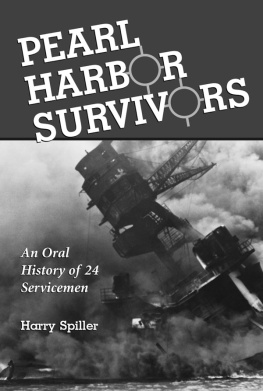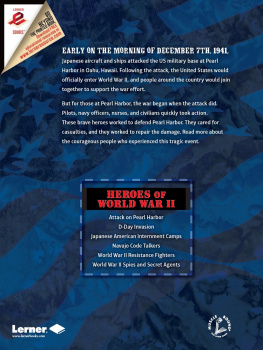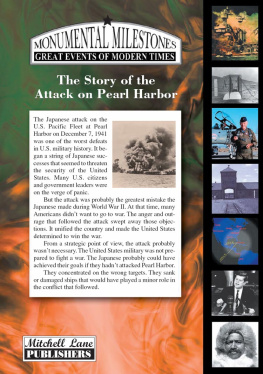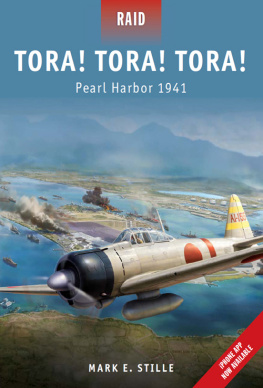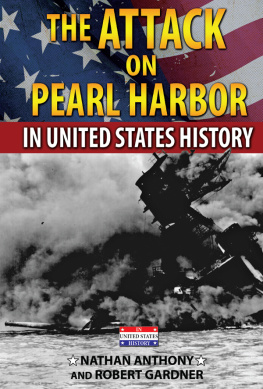Contents
Guide
Dedicated to the memory of John F. Lehr,
Staff Sergeant, USMC, Guam, 19451947
Contents
(in alphabetical order)
The Yamamoto Mission Pilots
ROGER J. AMES : First Lieutenant, Army Air Force, Laramie, Wyoming; cover flight
EVERETT H. ANGLIN : First Lieutenant, Army Air Force, Arlington, Texas; cover flight
REX T. BARBER : First Lieutenant, Army Air Force, Culver, Oregon; attack flight
DOUGLAS S. CANNING : First Lieutenant, Army Air Force, Wayne, Nebraska; cover flight
DELTON C. GOERKE : First Lieutenant, Army Air Force, Syracuse, New York; cover flight
LAWRENCE A. GRAEBNER : First Lieutenant, Army Air Force, St. Paul, Minnesota; cover flight
RAYMOND K. HINE : First Lieutenant, Army Air Force, Harrison, Ohio; attack flight
BESBY F. HOLMES : First Lieutenant, Army Air Force, San Francisco, California; attack flight
JULIUS JACK JACOBSON : First Lieutenant, Army Air Force, San Diego, California; cover flight
LOUIS R. KITTEL : Major, Army Air Force, Fargo, North Dakota; cover flight
THOMAS G. LANPHIER, JR. : Captain, Army Air Force, Detroit, Michigan; attack flight
ALBERT R. LONG : First Lieutenant, Army Air Force, Taft, Texas; cover flight
JOHN W. MITCHELL : Major, Army Air Force, Enid, Mississippi; ace pilot, mission planner, cover flight leader
WILLIAM E. SMITH : First Lieutenant, Army Air Force, Glendale, California; cover flight
ELDON E. STRATTON : First Lieutenant, Army Air Force, Anderson, Missouri; cover flight
GORDON WHITAKER : First Lieutenant, Army Air Force, Goldsboro, North Carolina; cover flight
Other Notable Characters
WALLACE L. DINN : Lieutenant, Army Air Force; friend of John Mitchell, killed in action
JOSEPH FINNEGAN : Lieutenant Commander, US Navy; code breaker, Station Hypo, Pearl Harbor
ELLERY GROSS : Lieutenant, Army Air Force; friend of John Mitchell, killed in P-38 Lightning test flight
WILLIAM J. BULL HALSEY, JR. : Admiral, US Navy; commander, US forces, Solomon Islands
HIROSHI HAYASHI : Chief Pilot, Betty bomber No. 326, April 18, 1943
WILFRED J. HOLMES : Lieutenant Commander, US Navy; code breaker, Station Hypo, Pearl Harbor
CHIYOKO KAWAI : geisha and Yamamotos mistress
ALVA RED LASSWELL : Major, US Marine Corps; code breaker, Station Hypo, Pearl Harbor
EDWIN T. LAYTON : Commander, US Navy; intelligence officer, US Pacific Fleet
JAMES MCLANAHAN : First Lieutenant, Army Air Force; originally assigned to the attack flight in the Yamamoto mission but replaced when engine trouble forced him to turn back
ANNIE LEE MILLER MITCHELL : wife of John Mitchell
EUNICE MASSEY MITCHELL : stepmother of John Mitchell
LILLIAN FLORENCE DICKINSON MITCHELL : mother of John Mitchell
NOAH BOOTHE MITCHELL : father of John Mitchell
MARC PETE MITSCHER : Rear Admiral, US Navy; commander, Air Forces, Solomon Islands
JOSEPH MOORE : First Lieutenant, Army Air Force; originally assigned to the attack flight in the Yamamoto mission but replaced when engine trouble forced him to turn back
CHUICHI NAGUMO : Vice Admiral, Imperial Japanese Navy; oversaw Pearl Harbor attack
CHESTER W. NIMITZ : Admiral, US Navy; commander in chief, US Pacific Fleet
JOSEPH J. ROCHEFORT : Commander, US Navy; officer in charge, Station Hypo, Pearl Harbor
SHOICHI SUGITA : Flight Petty Officer; pilot of one of six Zeros escorting Yamamoto from Rabaul to Bougainville on April 18, 1943
SADAYOSHI TAKANO : father of Isoroku Yamamoto
MATOME UGAKI : Vice Admiral; chief of staff, Combined Fleet, Imperial Japanese Navy; passenger aboard Betty bomber No. 326, April 18, 1943
HENRY VIC VICCELLIO : Colonel, Army Air Force; John Mitchells commander
YASUJI WATANABE : Captain, Imperial Japanese Navy; longtime aide to Yamamoto
ISOROKU YAMAMOTO : Admiral; commander in chief, Combined Fleet, Imperial Japanese Navy; passenger aboard Betty bomber No. 323, April 18, 1943
REIKO MIHASHI YAMAMOTO : wife of Isoroku Yamamoto
KENJI YANAGIYA : Flight Petty Officer; pilot of one of six Zeros escorting Yamamoto from Rabaul to Bougainville on April 18, 1943

THE FIRST ONE APPEARED FROM THE CLEAR BLUE SKY EARLY ON A Sunday morning, out of nowhere, it seemed, as sailors, soldiers, and civilians aboard ships, at airfields, in bunkhouses and in bungalows were just waking up, some shaving, others showering, still others already sipping coffee in the mess halls where they gathered for breakfast, many nursing hangovers after a night spent socializing on shore leave or at the base itself. Indeed, at Wheeler Field, some were still going strong, wearing tuxedoes and stumbling out of the officers club at 7:51 a.m. into the bright light of day, laughing and carrying on after their all-night party. These men dismissed the hum of engines in the sky, assuming that Navy planes were performing maneuvers, and they likely felt sorry for the pilots having to fly at the crack of dawn, on Gods day, no less, while most of the thousands of men and women assigned to Pearl Harbor were off duty. But as the hum grew louder, some of the men in their tuxes realized the engine noise did not sound quite right, different from their Navy planes, and in that moment the casual mood turned dark. As the planes closed in, the rising sun insignias on their wings were revealed, and in the next seconds a wave of Japanese dive-bombers opened fire, strafing and dropping their payload. The officers in tuxedoes, festive seconds before, ran for their lives, just as Americans stationed all around the Hawaiian island of Oahu did, as the shock and awe at Wheeler Field were repeated in the next nine minutes at other airfields and naval stations and then extended to the sprawling US Pacific Fleet moored at Pearl Harbor.
It was a surprise naval aerial assault involving 183 Japanese attack planes and bombers loaded with armor-piercing bombs, shallow-water torpedoes, and machine guns, all of which, in a flash, found targets on the ground and in the harbor. Bombs whistled to earth, sending up columns of oily black smoke from the hangars they flattened and the rows and rows of US fighter planes they wrecked, while men raced outside, dazed and wild eyed, pulling on pants, shirts, or a bath towel, dodging ear-shattering explosions, bullets, and shrapnel, some reaching safety, others not, their bodies bludgeoned by the blasts and bullets. At the mess hall at Hickham Field, a bomb plummeting through the roof exploded, killing some thirty-five men who only had thoughts about what to eat for breakfast on their minds. At 7:55 a.m., the Nevada ships band was readying to play The Star-Spangled Banner when two Japanese planes strafed the deck and shredded an American flag, just as an officer at the Ford Island Command Center at 7:58 a.m. frantically typed what became one of the most famous radio dispatches ever: AIR RAID, PEARL HARBOR. THIS IS NOT DRILL. At the same moment, an ensign using binoculars aboard the battleship Arizona stared at Japanese planes, unimpededly dropping one bomb after another onto Ford Island, before he broke to sound the ships three-blast alarm signaling an air raid, a howling siren that made its way throughout the six-hundred-foot-long destroyer. Men on other ship decks, too, gaped at the aerial savaging of airfields until something else caught their eyes: slender black masses in the waters below racing toward them, which the seamen instantly identified as shallow-water torpedoes, bombs that had splashed into the water from low-flying Japanese dive-bombers and were now speeding toward their battleships, the
Next page
